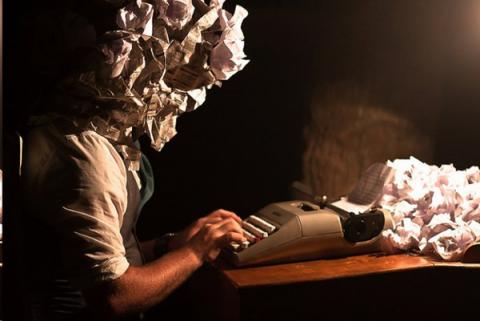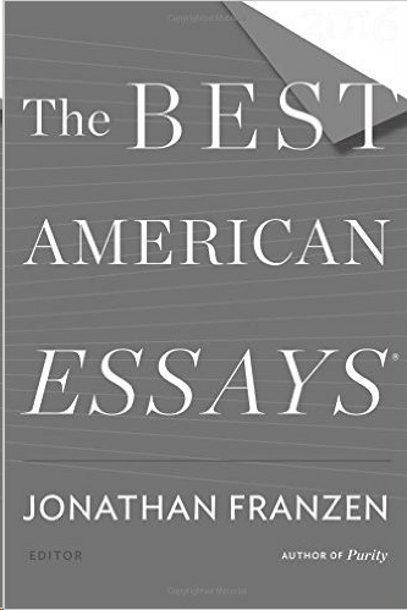The Art of the Personal Essay Is Still Alive and Well

The Best American Essays 2016
Jonathan Franzen, Guest Editor
Houghton Mifflin Harcourt
352 pages
Is the personal essay “in eclipse” in today’s literary landscape? Jonathan Franzen, guest editor of The Best American Essays 2016, thinks so. As he notes in his introduction to the latest collection, most American publications have ceased publishing these “pure essays,” while smaller publications that still do so “have fewer readers than Adele has Twitter followers.”
Nevertheless, Franzen has managed to come up with more than 20 essays published in 2016 that meet his personal criterion: Did the author risk something in writing his or her essay?
As with most collections, some essays carry more impact and linger longer in the reader’s mind than others. But the sterling quality of many of those chosen by Franzen would suggest that, though they can be hard to find, personal essays are alive and well in our own anxiety-ridden time.
Several pieces in Best American Essays focus on tempestuous father-child relationships. In “Bastards,” for example, Lee Martin describes the horrific fallout from a farming accident that leaves his father mangled for life. It’s a moving account of how grief and resentment can leave a permanent stain on family life.
In another essay, “Family Tradition,” Lisa Nikolidakis vividly recounts the brawl with her father that led her to flee home:
“When he raised his hand to hit me, a familiar bent elbow, a flash of knuckle, I used the give in the bed to spring into the air and kick him with both feet square in the center of his chest. As he fell back onto the dresser, loose change cascaded to the rug, the wobbling mirrors distorting our confrontation. I told him, yelled at him, for the first time, that I hated him: the first shouted smile of my life. Pure joy in defiance, in the bare truth of the word hate.”
As powerful as the passage is, it’s the tiny details (“loose change cascaded to the rug”) that make the essay truly spring to life.

Other fascinating essays expand beyond the domestic arena to shed new light on issues like immigration (Francisco Cantu’s “Bajadas,” about serving as a border agent”) and the perils of international travel (Richard M. Lange’s harrowing travel story, “Of Human Carnage”).
In another standout essay, “Sexual Paranoia,” Laura Kipnis issues a cri de coeur about the frantic state of campus sexual relations these days, particularly in the arena of teacher-student relationships.
While not denying the epidemic of harassment and worse that goes on at some institutions of higher learning, Kipnis wonders if there’s a cost attached to so strictly protecting students from “trigger” language and other forms of real and imagined harassment. What, she asks, will happen to students once they leave the protective cocoon of academe and encounter the “boorish badlands of real life”?
“I can’t help asking, because there’s a distressing little fact about the discomfort of vulnerability, which is that it’s pretty much a daily experience in the world, and every sentient being has to learn how to somehow negotiate the consequences and fallout, or go through life flummoxed at every turn.”
In tackling such a hot-button topic, Kipnis displays a refreshing and instructive levelheadedness mostly absent from today’s campuses (or, for that matter, American politics).
“The discipline of fashioning a compelling narrative can crystallize thoughts and feelings that you only dimly knew you had in you,” writes guest editor Jonathan Franzen. The good news, as The Best American Essays 2016 demonstrates, is the same thing can happen to readers of the compelling narratives found in this year’s collection.
Author Bio:
Lee Polevoi, Highbrow Magazine’s chief book critic, is the author of a novel, The Moon in Deep Winter.
For Highbrow Magazine





























































































































































































































































































































